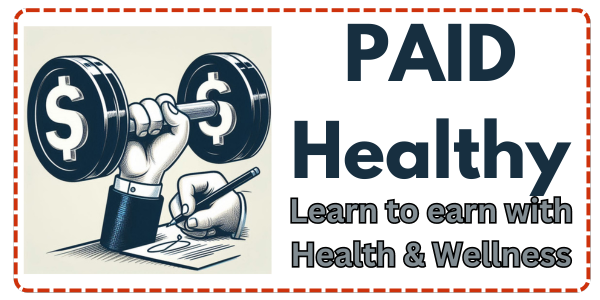Today, I’m going to be talking about the art of creating engaging and informative health blog posts.
This isn’t just about writing what you think will rank well on search engines; it’s also about writing content that truly resonates with and helps your readers. I want to help you understand why a people-first approach is critical in health blogging.
In my opinion, the backbone of a successful health blog is its adherence to the principles of E-E-A-T – that’s Experience, Expertise, Authoritativeness, and Trustworthiness. Applying these guidelines is more than just a box-checking exercise; it shapes content that your audience can rely on for accuracy and depth.

So here’s a mental picture of some of these websites: they don’t just give you the what, they also deeply address the who, why, and how. You’re going to find out about recognizing your audience’s needs, marrying expert knowledge with relatable narratives, and ultimately creating a blog presence that’s not only informative but also genuinely engaging.
Don’t worry too much about the SEO mumbo-jumbo just yet. You can always adjust your approach down the road. For now, choose something that resonates with you and your audience’s health journey. A lot is happening very quickly in the world of health information, and you’re right in the middle of it, ready to guide your readers through it all.
I really hope that by the end of this article, you’ll see how forging a real connection with your readers – backed by solid, expert knowledge – is the golden ticket to becoming a trusted resource in the health blogging community. And that is just the beginning. Next, we’re going to delve into understanding your audience’s health concerns and interests, which is the first step in our journey to creating people-first content.
Understanding Your Audience’s Health Concerns and Interests
If you’re going to create content that truly resonates with people, you need to tap into their health concerns and interests. It’s not just about dishing out advice; it’s about understanding the unique challenges and questions your readers have.

Start by exploring health forums, social media groups, and the comment sections of popular health blogs. What are the recurring themes? Which questions keep popping up? Analyzing these interactions gives you a treasure trove of insights into what your audience is seeking.
Surveys and polls can also be direct lines to your readers’ thoughts. Don’t be shy—ask them what topics they want to learn about or what health challenges they’re facing. This direct feedback is gold for shaping content that hits close to home.
Remember, not everyone is at the same point in their health journey. While some might be looking for beginner-level information, others may want deep dives into specific topics. It’s your job to cater to this spectrum with content that’s relevant and accessible to all knowledge levels.
Consider benchmarking against other successful health blogs. Notice how they communicate with their audiences and the types of content that get the most engagement. This isn’t about copying, but rather about learning what works and adding your unique spin to it.
Crafting Trustworthy Content with Expert Insights

When it comes to health blogging, the accuracy and reliability of your content isn’t just crucial, it’s a responsibility. You’re dealing with topics that directly affect the well-being of your readers, so ensuring that every piece of advice, fact, and statistic is verified is key. But how exactly do you infuse your posts with the sort of credibility that earns readers’ trust? You turn to the experts. Here’s how to create content that resonates with authority and expertise.
First off, you’re going to want to establish a solid foundation for your posts by consulting credible health sources. Think peer-reviewed journals, reputable health news outlets, and official guidelines from recognized health organizations. To go a step further, cite your sources so that readers can check the information themselves, which builds even more trust.
But don’t stop there. Consider reaching out to medical professionals who can provide not just validation but also fresh insights into the health topics you’re covering. Interviewing a registered dietitian for a blog post on nutrition, or getting input from a cardiologist for an article about heart health, can lend your content an added layer of authenticity that is invaluable.
By incorporating case studies and research findings, your blog posts can become go-to resources that offer depth and perspective. When you reference real-world scenarios or recent studies, you give your content an evidential boost that supports your narratives and recommendations. It shows your audience that you’re not just informing them—you’re providing a window into the larger conversation about health and wellness.
Making Complex Health Information Accessible
When it comes to health information, clarity is key. You’re going to find out about how to make the ins and outs of complex medical data easier for your readers to understand. This isn’t just about relaying facts; it’s about ensuring your readers walk away with a clear understanding of the information you’re providing.
Start by unpacking medical jargon. Choose something that resonates with you and your readers: simplicity. Instead of ‘hypertension’, you could say ‘high blood pressure’. This not only improves comprehension but also facilitates a deeper connection with the content, giving it a more personal touch.
Visual aids aren’t just add-ons, they are essential tools in demystifying health concepts. Infographics, charts, and videos can help convey complex ideas in an easily digestible format. For instance, a flowchart could illustrate the progression of a disease, or an infographic could summarize steps for preventive care.
You’re aiming for inclusivity, which means being mindful that your content is understandable to a diverse audience. Avoid using idioms or cultural references that may not be universally recognized, and consider providing translations or explanations when covering global health topics.
Remember, understanding breeds comfort. When people comprehend health information better, they may feel more motivated to engage with it and share it with others. That’s the strategy I like to leverage because well-informed individuals can make better health decisions for themselves and their communities.
Now, building a bridge from making health information accessible to crafting unforgettable stories is crucial in forming a lasting bond with your readers. In the next section, I’m going to highlight the importance of storytelling and how it can transform your blog posts from informative to captivating.
Incorporating Storytelling to Drive Engagement

Storytelling Makes A Blog Worth Reading and Commenting On.
You’re going to find out about the art of storytelling in this section, and it isn’t just about captivating an audience; it’s also about making health information stick. We all remember a good story, right? Well, the same goes for your blog posts. By weaving personal narratives into your articles, you’re giving readers a hook to keep them engaged.
I’m here to help you with techniques for blending narrative with informative health content. When crafting your story, choose something that resonates with both you and your readers. It could be a patient’s journey to recovery or a day in the life of a clinician. These types of stories can serve as powerful vehicles for conveying important health messages and lessons.
But don’t worry too much about getting overly creative. Your storytelling should be authentic, sensitive, and respectful of privacy. That brings us to ethical considerations. Always get consent if you’re sharing someone else’s experience, and avoid sharing identifiable health information unless it’s absolutely necessary and the individual has agreed.
Remember, the goal is to create posts that are not only interesting but also serve the larger purpose of educating your readers on health-related topics. With a well-told story, you can achieve both. Now, after hooking your readers with compelling stories, let’s pivot to how we can optimize these posts for search engines while still prioritizing the reader’s experience.
Optimizing for SEO While Prioritizing Reader Value
Now, you might be thinking that SEO sounds like a complex beast, tailored more toward machines than humans. I’m going to show you that this isn’t the case. SEO, when done right, enhances the user experience by ensuring the right people find your content at the right time.
Keyword research is your roadmap. It’s how you find out what your audience is actually typing into those search bars. Choose something that resonates with them. Your goal? Create content that not only ranks but also genuinely helps the person on the other end of the screen.

Crafting engaging meta titles and descriptions is your next order of business. This is often the first impression people get of your blog. Make it count. They should be clear, and intriguing, and leave users wanting to click for more.
You’re going to find out about a balance; it’s crucial. Keyword stuffing is a relic of a bygone era. Today, your focus should be on natural language – write as you speak. This makes articles easier to read and understand, increasing the time people spend on your site, and this in turn sends positive signals to search engines.
Lastly, if you are looking for an awesome tool for Keyword Research try Jaaxy.com. This user-friendly software can unlock insights into trends and search habits, so you’ll be on top of your SEO game without losing the human touch your readers value so much.
Leveraging Social Media for Wider Reach and Interaction
This isn’t just about writing outstanding health blog content; it’s also about how you share that content to amplify its reach. You’re going to find out about the top 5 social networks that can skyrocket your blog’s visibility and foster meaningful engagement.
Facebook remains a heavyweight, with its vast user base and targeted groups. Sharing your posts in health-focused groups can drive significant traffic and offer opportunities for engaging with your audience.
LinkedIn is often seen as a professional network, but it’s a goldmine for connecting with health experts and enthusiasts who value in-depth, informative articles.
Instagram encourages visual storytelling. With the right hashtags, your health tips, videos, and infographics can reach countless individuals who crave bite-sized, easily digest schedules.
Twitter’s fast-paced nature is perfect for sharing breaking health news and snippets of your blog posts, prompting users to visit your website for more information.
There are also independent networks like our own Kiosk Social which offer professional-level tools and promotion to tighter niche audiences. Kiosk Social is focused on the recruiting end of Affiliate programs and network marketing or MLM companies helping you grow teams of sub-affiliates.
Remember, it’s not just about posting links to your articles. It’s about creating a dialogue. Use these platforms to ask questions, start discussions, and provide little nuggets of valuable information that point back to your blog for more details.
Check out our LiveGood Page on Kiosk Social
Choose something that resonates with you and your audience. Tailor your approach for each social media platform to suit its unique community and content preferences. That’s the strategy I like to leverage to turn individual readers into a vibrant community of health-conscious followers.
Conclusion: Fostering a Community of Health-Conscious Readers

Now, let’s wrap up what we’ve covered. Creating engaging and informative health blog posts is so much more than just hitting ‘publish’ on your content. It’s about connection, education, and building a collective space for health-conscious individuals.
I’ve covered some crucial points, from understanding your audience to conveying complex health topics in a relatable way. Remember, at the core of it all is trust. Your readers rely on you for accurate, accessible health information, and it’s your responsibility to deliver.
Don’t forget the power of social media to amplify your message. Platforms like Facebook, Twitter, LinkedIn, Instagram, and YouTube are not just tools; they’re communities where your voice can reach further and engage more deeply.
I encourage you to bake reader interaction into every step of your content strategy. Ask questions, invite feedback, and be present to respond. It’s through this dialogue that your blog can evolve and stay relevant.
Your first attempt doesn’t need to be your last. I hope you’ll take these insights and keep fine-tuning your approach. With dedication and a keen focus on a people-first approach, you’ll not only inform but also inspire your readers to lead healthier lives.
Thank you for joining me on this journey to better health blogging. If you’ve found this helpful, I’d love to hear how you’re putting these strategies into practice. Share your progress, and let’s continue to support one another in promoting health knowledge and wellness.


Thank you so much for another very informative article about how to build a profitable health blog. I hope you don’t mind, but I am starting my own natural cure for diabetes along with yours, an d I have a ton of questions. I am sure they will all be answered in future articles, but for now, can you use AI to build case studies, and if you recommend it, what prompt would you use?
I am new to prompt writing but AI has big advantages in terms of researching posts in minutes. If I need linkable resources Google Bard seems to offer more in that area, but for a large share of writing I use ChatGPT4 and the built in tool at Wealthy Affiliate where I host this blog. I will say no AI is stand alone, you often need to add in content to weaker sections, correct misspells and grammar, but for content demands and sharp deadlines it can be a time saver. I will do more research into prompts and get back to you.